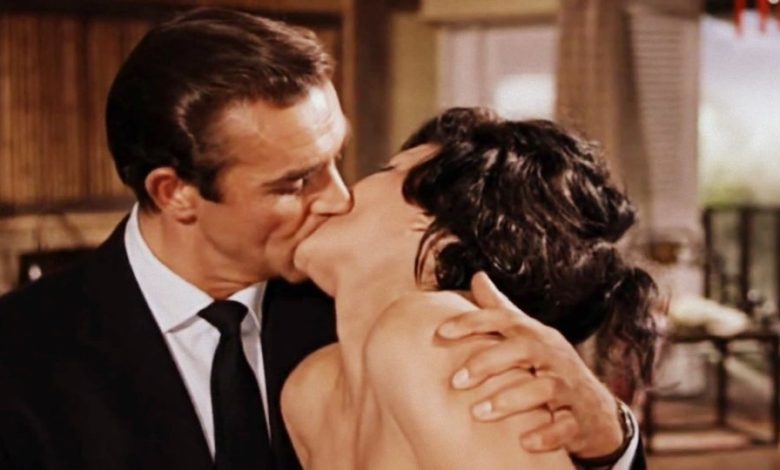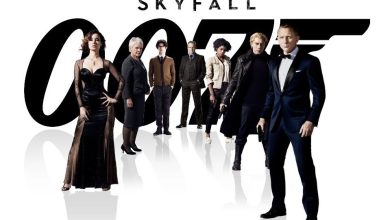Fighting, Flirting, Feminism: The Bond Girl Evolution
Unveiling the Evolution of Bond Girls: What Makes Them Iconic?

The iconic Bond Girl has been a fixture in the James Bond franchise for over 50 years, captivating audiences with their allure, charm, and romantic entanglements with Agent 007. However, the perception and portrayal of Bond Girls have evolved significantly over time, reflecting the shifting societal norms and cultural expectations surrounding women’s roles. Gone are the days when Bond Girls were merely eye candy or damsels in distress. Today, they are multidimensional characters who possess intelligence, agency, and skills that make them integral to the plot.
In this article, we delve into the fascinating journey of Bond Girls and explore what makes them truly iconic. From Ursula Andress’ emergence from the ocean in “Dr. No” to the dynamic female characters of the recent blockbuster “Skyfall,” we unravel the transformations that have shaped the Bond Girl archetype. We examine how these characters have broken free from stereotypes, embraced their physical abilities, and contributed to the empowerment of women in film. Join us as we celebrate the evolution of Bond Girls and the impact they have had on the broader cultural landscape.
KEY TAKEAWAYS
- Bond Girls have evolved from being mere love interests to powerful and capable characters who challenge gender stereotypes.
- Modern Bond Girls embrace their physical abilities, showcasing athleticism, intelligence, and combat skills.
- The portrayal of Bond Girls has influenced the empowerment of women in film, inspiring the creation of diverse and complex female protagonists.
- Bond Girls have moved away from objectification, focusing on their agency, skills, and contributions to the plot.
- The future of Bond Girls is expected to continue evolving, embracing more inclusive and empowering narratives.
What Makes a Bond Girl?
Ever since Ursula Andress’ memorable emergence from the ocean in “Dr. No” 50 years ago, the term “Bond Girl” has become synonymous with sexually independent and attractive women who share a flirtatious connection with James Bond, Agent 007. While some Bond Girls turn out to be villains or meet unfortunate fates, they always leave a lasting impression. It is important to note that the Bond Girl category does not include early female villains or recurring characters like Judi Dench’s M, who heads MI6. In each of the 23 Bond films released so far, including the recent blockbuster “Skyfall,” Bond has been accompanied by at least one Bond Girl. However, these female counterparts have evolved over time to reflect the changing perception of women’s roles, shedding light on what each era believes a woman can achieve.
The Bond Girls of “Skyfall”
In the movie “Skyfall,” two female characters, Sévérine (played by Bérénice Marlohe) and Eve (played by Naomie Harris), exemplify the diverse portrayals of Bond Girls. Sévérine fits the classic sexy damsel-in-distress archetype, seeking Bond’s help to escape a terrifying villain. On the other hand, Eve, one of Bond’s colleagues at MI6, engages in playful banter with him but does not require rescue. She demonstrates her capabilities by driving through crowded streets, handling confidential information, and displaying decent marksmanship. Naomie Harris, the actress who portrays Eve, embraced the opportunity to give her role a modern twist, stating that the Bond Girl label no longer represents a stereotypical character, but rather someone who can embody various roles.
From Stereotypes to Empowerment
The evolution of Bond Girls has been driven by societal shifts and changing cultural expectations. According to Yvonne Tasker, author of “Spectacular Bodies: Gender, Crime, and the Action Cinema,” the Bond Girl has endeavored to embody popular images of strong and independent women from each era. In the 1960s, the Bond Girl symbolized sexual independence, while the 1970s portrayed her more as a figure of amusement. The evolution continued, and by the turn of the 21st century, Bond Girls started resembling athletic and action-oriented heroines, akin to the other female leads in action movies. The portrayal of women in popular culture now revolves around the idea of strong women, provided they conform to certain types while remaining young and sexually desirable.
The Rise of Action-Hero Bond Girls
Naomie Harris, with her role as Eve, represents a significant step forward in the portrayal of Bond Girls. While earlier Bond Girls were exceptional in their own ways, embodying the spirit of a younger generation challenging traditional gender roles, today’s action-hero Bond Girls possess physical prowess and are no longer viewed as passive or innocent. Tasker highlights Michelle Yeoh’s role in 1997’s “Tomorrow Never Dies” as a turning point when female action characters set a high bar for athleticism and combat skills. This shift in popular culture signifies the acceptance and recognition of female heroes who can take center stage and be integral to the storyline. Although Eve’s appearance matters, her focus on business rather than her romantic involvement with Bond challenges traditional expectations.
A New Era for Bond Girls
While a female 007 taking the lead in a James Bond story may not be imminent, characters like Eve, influenced by real-life encounters of actress Naomie Harris with MI6 agents, represent a new era of Bond Girls. These characters are less dependent on Bond for rescue and possess the capability to save him instead. Naomie Harris attributes the modernization of the Bond Girl role to her willingness to infuse her own uniqueness into the character, free from the influence of past portrayals. As the Bond franchise acknowledges the evolution of women in action cinema as independent heroes, the term “Bond Girl” may eventually encompass only the more traditional aspects of flirting, sex appeal, potential rescue, and potential demise, while women like Eve find themselves categorized alongside M, where gender becomes less significant.
In the ever-changing landscape of Bond films, the Bond Girl archetype has evolved to reflect the progress made in empowering and portraying multifaceted female characters. Each iteration of the Bond Girl contributes to the ongoing narrative of women’s roles in film, allowing audiences to witness the transformation of these iconic characters through the lens of their respective eras.
FAQ: Unveiling the Evolution of Bond Girls
1. What defines a Bond Girl?
A Bond Girl is typically characterized as a sexually independent and attractive woman who shares a flirtatious connection with James Bond. She is often associated with the image of a seductive, alluring femme fatale. However, over the years, the definition of a Bond Girl has expanded to encompass more diverse and complex portrayals. Today, a Bond Girl can be a capable and empowered individual, possessing various skills and contributing actively to the storyline. While the archetype still retains elements of sensuality and charm, the modern Bond Girl transcends stereotypes and reflects the changing perceptions of women’s roles in society.
2. How have Bond Girls evolved over time?
Bond Girls have evolved in response to societal changes and cultural expectations. In the early days, Bond Girls represented the ideal of sexual independence, reflecting the attitudes of the 1960s. As the franchise progressed, they started to embody different traits based on the era they represented. In the 1970s, they became more light-hearted and fun-loving. However, in recent years, Bond Girls have taken on a more action-oriented role, displaying physical prowess, intelligence, and independence. They have become integral to the storyline, capable of being heroes in their own right, rather than mere companions or objects of desire.
3. Do Bond Girls always need to be rescued by James Bond?
No, the concept of Bond Girls needing constant rescue by James Bond has evolved. While early Bond Girls often required assistance from Bond, recent portrayals have challenged this notion. Many modern Bond Girls are depicted as capable and self-reliant individuals who can handle themselves in dangerous situations. They possess skills such as combat training, driving prowess, and intelligence, allowing them to actively contribute to missions and even save Bond himself. The shift towards more empowered Bond Girls reflects a broader cultural trend of showcasing strong and independent female characters in action cinema.
4. How have Bond Girls embraced their physical abilities?
Bond Girls have increasingly embraced their physical abilities as the franchise has progressed. Inspired by the changing landscape of action cinema, modern Bond Girls are athletic, capable, and trained in combat. They are no longer portrayed as passive or compliant but as active participants in action sequences. This evolution aligns with the cultural expectation of showcasing physically strong women in popular culture. By highlighting their athleticism and combat skills, Bond Girls have transformed into formidable characters who can hold their own in dangerous situations, challenging the traditional damsel-in-distress trope.
5. Is the role of a Bond Girl limited to sexuality and flirtation?
While the Bond Girl archetype traditionally encompassed elements of sexuality and flirtation, the role has expanded far beyond that. Today, Bond Girls are multi-dimensional characters who can possess diverse qualities and contribute meaningfully to the plot. They are not defined solely by their romantic involvement with Bond but by their intelligence, skills, and agency. The modern Bond Girl can be an integral part of the action, showcasing courage, resourcefulness, and determination. While their attractiveness still holds significance, it is no longer the defining aspect of their character.
6. Has the portrayal of Bond Girls influenced female empowerment in film?
Yes, the portrayal of Bond Girls has played a role in influencing female empowerment in film. Over time, Bond Girls have become more than just love interests or side characters. They have evolved into powerful figures who can challenge gender norms and embody strength and independence. The portrayal of strong and capable women in prominent roles has paved the way for more diverse and empowering female characters in the broader cinematic landscape. Bond Girls have contributed to the ongoing dialogue about gender representation in media and have inspired the creation of complex and empowered female protagonists in various genres.
7. Can a Bond Girl be a hero in her own right?
Absolutely. In recent Bond films, Bond Girls have been portrayed as heroes in their own right. They are not merely supporting characters or sidekicks; they are essential contributors to the narrative. Bond Girls can be instrumental in foiling villains’ plans, displaying intelligence, bravery, and resilience. Their roles extend beyond being damsels in distress or objects of desire. By portraying Bond Girls as heroes, the franchise acknowledges and celebrates the strength and capabilities of women, ensuring they are integral to the story rather than mere accessories to the male protagonist.
8. Are Bond Girls still objectified in modern films?
While the early Bond films often portrayed women as objects of desire, the modern iterations have made strides in moving away from objectification. Contemporary Bond Girls are characterized by their agency, intelligence, and individuality. Their physical appearance is still a part of their portrayal, but it is no longer the sole focus or defining feature. The emphasis has shifted towards showcasing their capabilities, skills, and contributions to the plot. The evolving portrayal of Bond Girls reflects a conscious effort to move beyond objectification and present them as fully realized characters with their own narratives.
9. Can Bond Girls break free from gender stereotypes?
Yes, Bond Girls have the potential to break free from gender stereotypes. The modernization of the Bond Girl archetype has allowed for more nuanced and diverse portrayals that challenge traditional gender expectations. Bond Girls can exhibit a wide range of traits and capabilities, defying preconceived notions of what women can or should be in films. By presenting strong, independent, and multi-dimensional characters, Bond Girls contribute to the dismantling of gender stereotypes and pave the way for more inclusive and empowering representations of women in the world of cinema.
10. Will the role of Bond Girls continue to evolve in future films?
The role of Bond Girls is likely to continue evolving in future films, reflecting the changing cultural landscape and societal expectations. As conversations around gender representation and female empowerment gain momentum, the portrayal of Bond Girls will likely become more diverse and complex. The franchise has already shown a willingness to adapt and present Bond Girls as capable, independent, and central to the plot. Future films may continue to challenge traditional norms and push the boundaries of what it means to be a Bond Girl, embracing more empowering and inclusive narratives that resonate with modern audiences.
CONCLUSION
The evolution of Bond Girls reflects the progress made in the portrayal of women in film. From their early depictions as seductive companions to their modern iterations as empowered and capable characters, Bond Girls have broken free from the confines of gender stereotypes. These iconic figures have become symbols of strength, intelligence, and independence, challenging traditional expectations and inspiring audiences around the world.
As the James Bond franchise continues to evolve, we can anticipate further transformations in the portrayal of Bond Girls. The future holds the promise of even more diverse and inclusive narratives, where Bond Girls can take center stage as heroes in their own right. With each new film, the Bond Girl archetype contributes to the ongoing conversation surrounding gender representation in media, paving the way for a more equitable and empowering cinematic landscape.
Join us as we celebrate the legacy and evolution of Bond Girls, appreciating their significant role in shaping the cultural zeitgeist and redefining what it means to be an iconic female character in the world of cinema.









